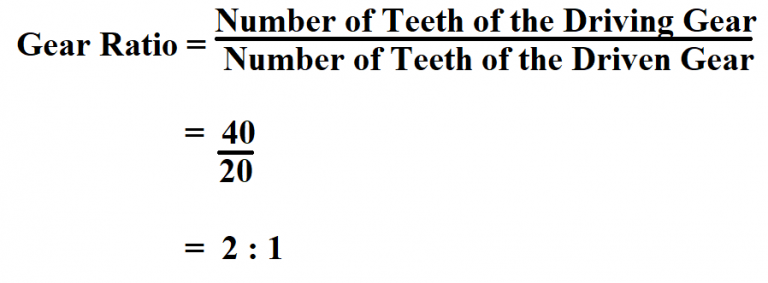What is Gear ratio? How to calculate Gear Ratio with Formula

You should consider whether you understand how spread bets and CFDs work and whether you can afford to take the high risk of losing your money. Our Next Generation trading platform offers Morningstar fundamental analysis sheets, which provide quantitative equity research reports for many global shares. These sheets help to support your fundamental analysis strategy and can provide a guideline for measuring a company’s intrinsic value. Although financial leverage and financial risk are not the same, they are interrelated.
How Much Gearing Is Appropriate for a Company?
It does not imply an obligation to purchase investment services, nor does it guarantee or predict future performance. Although, in case of liquidation, they stand first in the queue to claim charges over assets. The input shaft and output shaft are connected by the intermediate shaft. During operation, the pinion makes three complete revolutions for every single revolution of the larger gear. Gear is a round wheel that has teeth that mesh with other gear teeth, allowing the force to be fully transferred without slippage. The teeth of the gear are principally carved on wheels, cylinders, or cones.

Business
- If your company’s gearing ratio is too high, lowering it can significantly improve financial stability.
- It’s important to note that higher gearing may be compensated by higher business profitability.
- Raising capital by continuing to offer more shares would help decrease your gearing ratio.
Similarly, payment of interest and repayment of capital can lead to inefficiency in cash flow management. The equity ratio helps assess the proportion of the assets financed by equity. A higher equity ratio indicates that the business has better long-term solvency and is more stable. Therefore, if the ratio is over 50% and worsening, a company’s debt position would be worth examining, because leverage and gearing indicate the risk attached to the entity’s finance. Hence, a company that never uses leverage is likely missing out on an opportunity to grow its business by taking advantage of debt financing.
By Lenders
This article explores the gearing ratio, how to calculate it, and how to analyze it. The debt portion of the financing structure is more than equity, which means the financing structure is a little risky from an investor’s perspective. A lower debt ratio is desirable from the lender’s perspective of the business. The main aspects of the business include profitability, liquidity, activity, and gearing. A good business manager has the competence to manage all of these aspects and ensure the efficient running of the business. Nevertheless, sometimes, non-redeemable preference shares (less common than redeemable) are still classified as equity.
Understanding Gearing Ratios
Perhaps the most common method to calculate the gearing ratio of a business is by using the debt to equity measure. For example, a gearing ratio of 70% shows that a company’s debt levels are 70% of its equity. Lenders may use gearing ratios to decide whether or not to extend credit, and investors may use them to determine whether or not to invest in a business. The gearing ratio is often used interchangeably with the debt-to-equity (D/E) ratio, which measures the proportion of a company’s debt to its total equity. Capital gearing is a British term that refers to the amount of debt a company has relative to its equity.
How Gearing Ratios Work
Therefore, it gives a beneficial insight into the company’s leverage position. It directly shows the percentage of the company that is leveraged by debt. A ratio of more than fifty per cent indicates that the company has a large debt load relative to its equity.
So, we need to analyze where the proceeds of the loan have been consumed. It’s important to note that higher gearing may be anything that can go wrong will go wrong compensated by higher business profitability. This is because a higher rate of return can easily cover the cost of capital.
As we discussed above, a high ratio could indicate a higher default risk, which could make it harder for a business to get funding or good loan terms. In contrast, a low ratio indicates a lesser default risk, which may attract lenders and creditors to a corporation. A high ratio suggests that the company needs to borrow a large amount of money to sustain its operations, which could further strain its cash flow. There are several ways a company can try to indirectly manage and control its gearing ratio, usually by profit, debt and expense management.